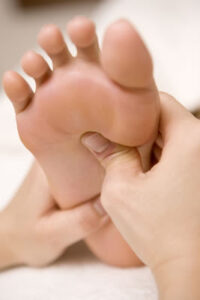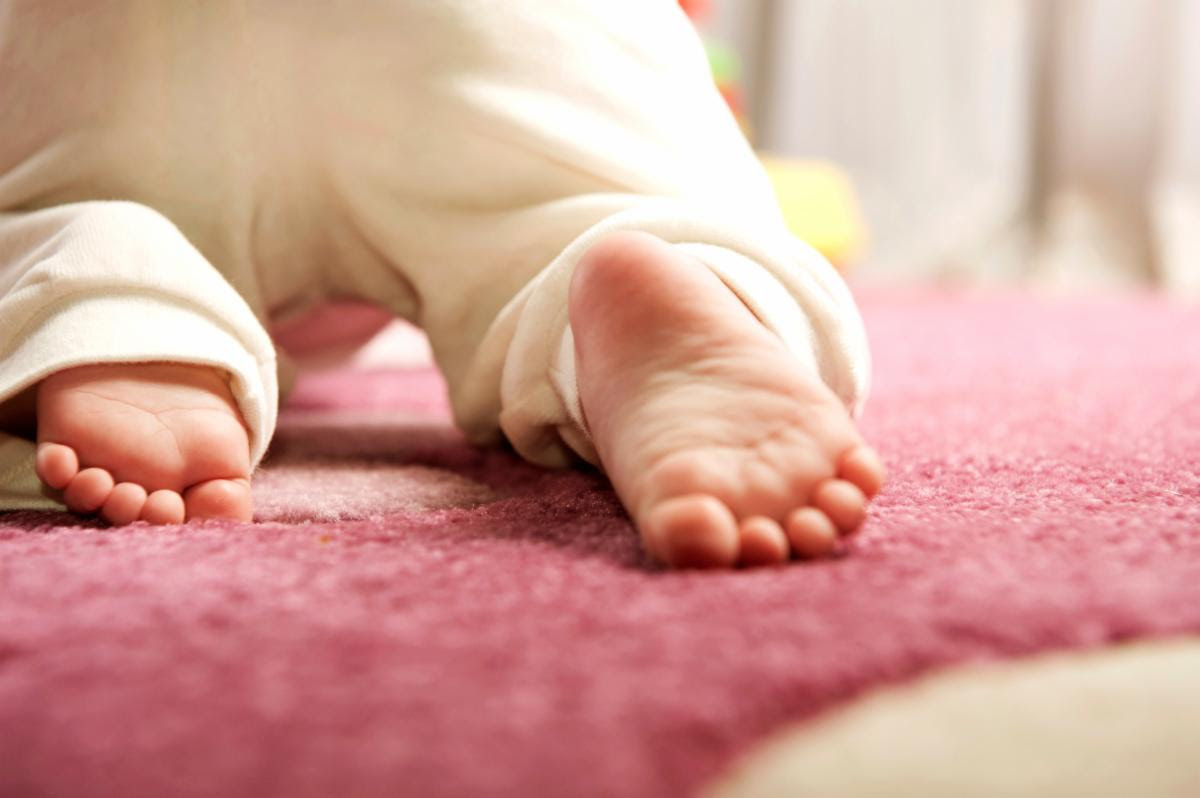Feet Pain? How Does Understanding Early Development Help You Feel Better?
Fun facts about feet
Feet have no bones at birth!
The bones are still forming, and what we think of as bones is actually cartilage. The bones form later in the first year, which is why shoes aren’t recommended at this early age.
200,000 nerve endings!
You have so many nerves and types of sensory receptors in your feet. This is why sock seams and grains of sand can feel so annoying!
You have bunions, plantar fasciitis, or simply painful feet. What does early development have to do with getting relief?
Going back to early development is the secret to finding a long-lasting solution for your issues. There are three ways understanding early development comes into play with defining your issues and guiding a solution.
How are feet supposed to move and interconnect with the rest of the body?
When you have problems with your feet, there are basic movements which every type of professional will assess. We all agree that these fundamental aspects of movement in the foot and ankle need to work correctly.
When your feet still hurt, there is more to check. Beyond the basics, the Bridging® framework looks at the interconnectivity of the feet to the knee, hip, and core.
Why? Because the feet have three jobs to do — move us, balance us, and stop us. All of these jobs involve absorbing forces. Forces ideally attenuate through the musculoskeletal system. Distributing force away from the foot is key to minimizing foot stress.
What happened to your feet and legs to alter how the system works together? And when did this happen?
When assessing movement flow and interconnections of the feet, legs, and core, we also take into account when injuries and medical procedures happened.
Following any physical trauma — injury or medical — your body creates a set of compensations to keep moving. Sometimes a change to the foot (think sprained ankle or jammed toe) creates compensations at the hip and core. This can shift stress to the other leg and foot, even if they are not the source of the original trauma.
By understanding the layers of compensations, we can help to unravel them completely, leaving you to enjoy long-lasting relief.
What are the primary ways feet, legs, and core build movement in infancy?
Resetting the early life relationships between the feet, knees, hips, and core is the sustainable roadmap for solving your pains.
Babies don’t have to stretch, ice, and exercise daily to keep their function, and neither should you! By rebuilding the original movement foundation, your daily activity reinforces the better function. Voila!
Wondering if Bridging can help with your aching feet? Fill out our intake form and we’ll get back to you with insights on how Bridging® can help.
A quick story to illustrate the above …
 The saying goes, “A healthy person has many goals, and a person in pain has only one.”
The saying goes, “A healthy person has many goals, and a person in pain has only one.”
Kate’s story and goal
Kate came in with plantar fasciitis in the right foot. She had been to her chiropractor, her primary care, and done several rounds of physical therapy, but was still in pain. All she wanted was to get back to playing pickle-ball with her friends!
What had happened to her?
We asked her about injuries, medical procedures, and early development history. Here are a few keys: she had multiple sprains as a teen playing soccer, and that’s about it. It was a mystery to Kate as to why the pain popped up and wouldn’t easily go away.
What did we find?
In assessing her feet, we found that they moved symmetrically and well, but didn’t link across the ankle to the lower leg and up to the hip and core completely. (Likely from all the soccer sprains.)
We also found her left hip was tight and restricting her pelvic rotation. When she walked or ran, she came down onto her right foot too quickly. She remembered taking a fall earlier in the year and landing on her hip. Nothing was broken and the pain went away after several days. She thought little more about it.
What did we do?
We had to re-create the angles and movements of the fall in order to clear the way it had gotten her pelvis off-center. Centering the pelvis and hips took stress off the legs and feet and cleared the need for compensations.
Once the pelvis and hip movements were squared, we refreshed a series of movements while she was on her back, tummy, and while sitting. This variety of positions mimics a variety of foot interactions to ensure a robust solution.
The gentle Bridging® micromovements and stretches reset how her core and leg muscles were working so there were no home exercises to do. To keep everything working good as new, all she had to do was her daily activities of life.
How did she feel?
The pain had moderated by the time we finished. Checking in a few days later, the pain was mostly gone. Kate was grateful, and returned to the pickle-ball court a week later. She came in one more time to fine tune specific movements at the ankle. She was amazed and happy!

